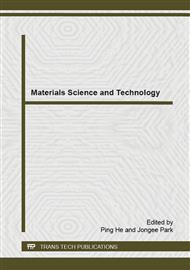p.165
p.171
p.175
p.183
p.191
p.197
p.205
p.213
p.219
Comparative Study of Microcantilever-Based Sensor for Biosensing Applications
Abstract:
Cantilever-based sensors have emerged as a promising label free detection technique, which have been used for high precision mass detection and biomolecular recognition. By surface functionalization, the cantilever can be modified specific to certain compounds detection. Molecules adsorbed to one side of the cantilever will deflect the cantilever due to changes in surface stress. Alternatively, minute mass changes can be detected by monitoring the resonant frequency change of the cantilever for high-precision mass detections. This work is dedicated to finite element (FE) 3Dstructural modeling of three layers micromechanical sensors in ANSYS 13.0 gives 3D model which are close to reality mathematical models. Material used in cantilever for different layers are silicon-dioxide, poly-silicon and nitride. The emphasis of the analysis is put on tile effects of the angle of inclination of the concentrated force upon the deformed shape, the load-deflection relationship stresses and strain for further analysis with a greater degree of accuracy. The model we made is three different model i.e. single layer microcantilevers, three layers microcantilever with same height and three layers with different height. In three layer the centre layer i.e. second layer, is piezoresistive layer that helps to calculate Characteristics i.e. deflection, deformation, stress and strain in the cantilever for the given applied force that can we used for future analysis for the detection of biomolecules in various biosensing application. Finally the comparison of all the three different model of cantilever according to their characteristics.
Info:
Periodical:
Pages:
205-212
Citation:
Online since:
December 2014
Authors:
Keywords:
Price:
Сopyright:
© 2015 Trans Tech Publications Ltd. All Rights Reserved
Share:
Citation:


